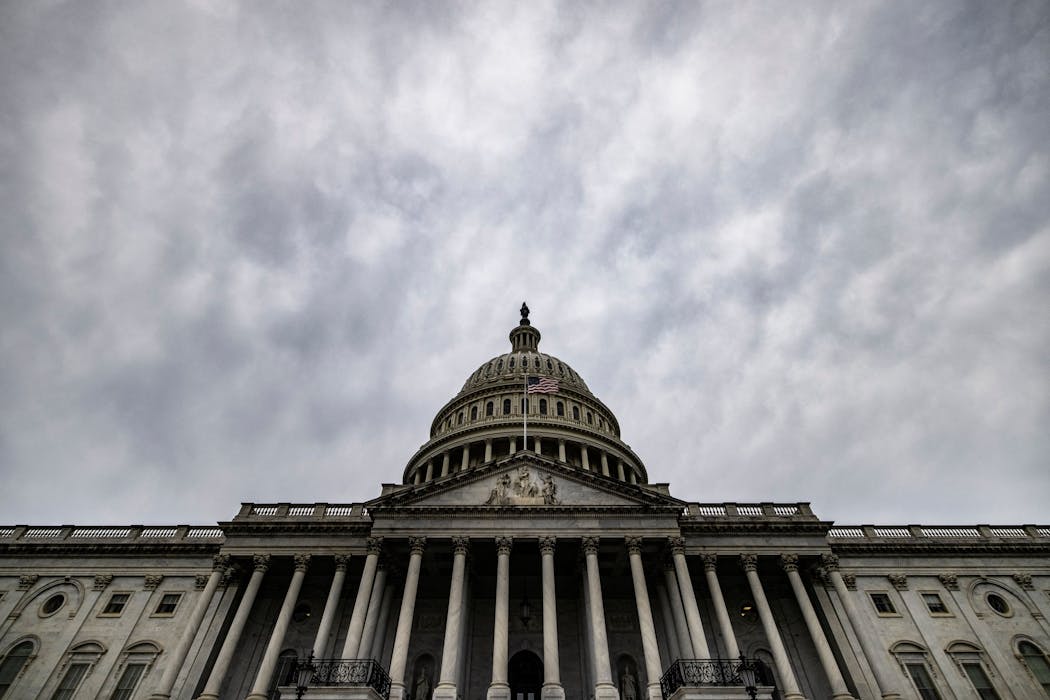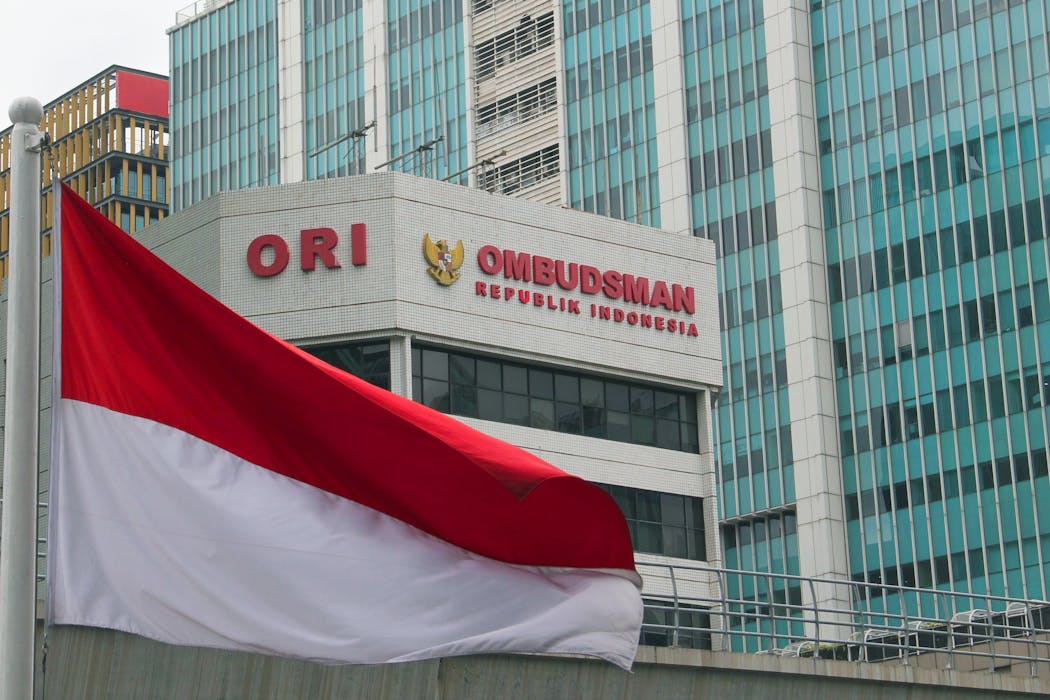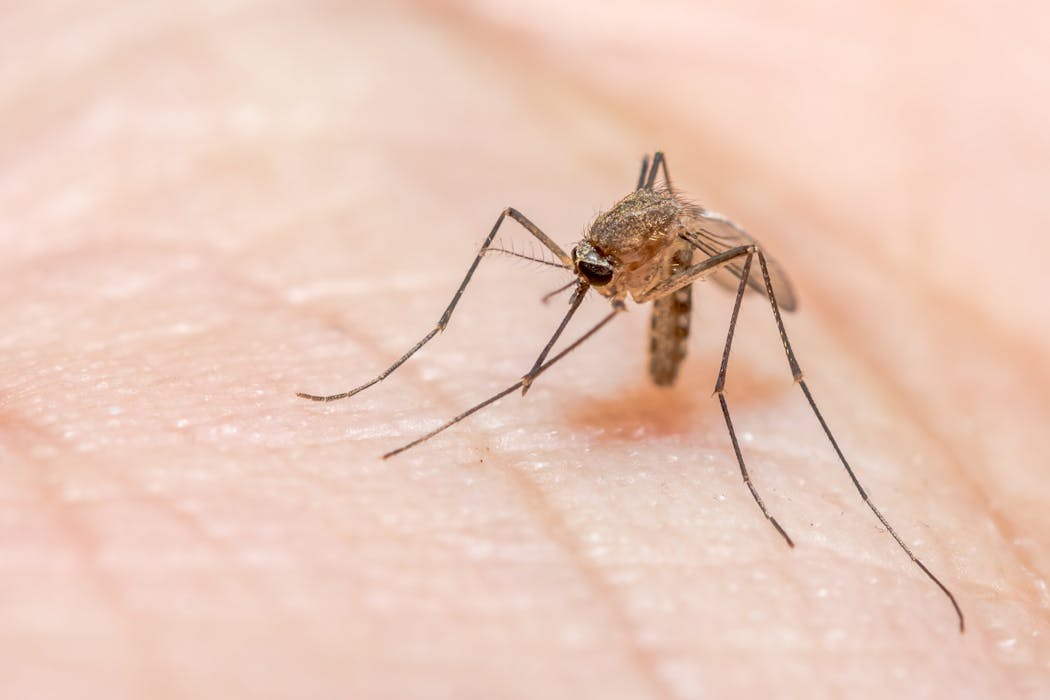All government shutdowns disrupt science − in 2025, the consequences extend far beyond a lapse in funding
- Written by Kenneth M. Evans, Fellow in Science, Technology, and Innovation Policy, Baker Institute for Public Policy, Rice University

U.S. science always suffers during government shutdowns. Funding lapses send government scientists home without pay[1]. Federal agencies suspend[2] new grant opportunities, place expert review panels on hold, and stop collecting and analyzing critical public datasets[3] that tell us about the economy[4], the environment[5] and public health[6].
In 2025, the stakes are higher than in past shutdowns.
This shutdown arrives at a time of massive upheaval[7] to American science and innovation driven by President Donald Trump’s ongoing attempts[8] to extend executive power[9] and assert political control[10] of scientific institutions[11].
With the shutdown entering its fifth week, and with no end in sight[12], the Trump administration’s rapid and contentious changes to federal research policy are rewriting the social contract[13] between the U.S. government and research universities – where the government provides funding and autonomy in exchange for the promise of downstream public benefits.
As a physicist[14] and policy scholar[15], I both study and have a vested interest in the state of U.S. science funding[16] as a recipient of federal grants. I write about the history[17] and governance[18] of American science policy[19], including the nation’s investments[20] in research and development.
In the context of broader policy reforms to federal grantmaking[21], student[22] and high-skilled[23] immigration[24], and scientific integrity[25], this shutdown has both known and unknown consequences for the future of U.S. science[26].
Funding freezes, data gaps and unpaid workers
Over the past two decades, the story of government shutdowns[27] has become all too familiar[28]. Shutdowns occur when Congress fails to pass an appropriations bill before the start of the new fiscal year on Oct. 1, and, paraphrasing Article 1, Section 9[29] of the U.S. Constitution, the government can no longer spend money.
This funding gap affects all but essential government operations, such as the work of postal workers[30], air traffic controllers[31] and satellite operators[32]. Nonessential employees, including tens of thousands[33] of government scientists, are barred from working and stop receiving paychecks.
With scientists and program officers at home, activities at the nearly two dozen federal agencies participating in research and development, such as the National Science Foundation[34] and the National Institutes of Health[35], come to a halt. New grant opportunities and review panels are postponed or canceled[36], researchers at government laboratories stop collecting and analyzing data[37], and university projects reliant on federal funding are put at risk[38].
Extended shutdowns accelerate the damage. They leave bigger gaps in government data, throw federal employees into debt[39] or lead them to dip into their savings[40], and force academic institutions to lay off staff[41] paid through government grants and contracts.
Funding, public services and the rule of law
Even for shutdowns lasting a few days, it can take science agencies months to catch up[42] on the backlog of paperwork, paychecks and peer review panels before they return to regular operations.
This year, the government faces mounting challenges to overcome once the shutdown ends: Trump and the director of the White House budget office, Russell Vought, are using the shutdown as an opportunity[43] to “shutter the bureaucracy[44]” and pressure universities to bend[45] to the administration’s ideological positions on topics such as campus speech, gender identity and admission standards.
As the budget standoff nears the record for the longest shutdown ever[46], agency furloughs[47], reductions in force[48], canceled grants[49] and jeopardized infrastructure projects[50] document the devastating and immediate damage to the government’s ability to serve the public.
However, the full impact of the shutdown and the Trump administration’s broader assaults on science to U.S. international competitiveness[52], economic security[53] and electoral politics[54] could take years to materialize.
In parallel, the dramatic drop[55] in international student enrollment, the financial squeeze[56] facing research institutions, and research security[57] measures to curb foreign interference spell an uncertain future for American higher education.
With neither the White House nor Congress showing signs of reaching a budget deal, Trump continues to test the limits of executive authority[58], reinterpreting the law – or simply ignoring it[59].
Earlier in October, Trump redirected unspent research funding[60] to pay furloughed service members before they missed their Oct. 15 paycheck. Changing appropriated funds directly challenges the power vested in Congress – not the president – to control federal spending.
The White House’s promise[61] to fire an additional 10,000 civil servants during the shutdown, its threat to withhold back pay[62] from furloughed workers and its push to end any programs with lapsed funding “not consistent with the President’s priorities[63]” similarly move to broaden presidential power.
Here, the damage to science could snowball. If Trump and Vought chip enough authority away from Congress by making funding decisions or shuttering statutory agencies, the next three years will see an untold amount of impounded, rescinded or repurposed research funds.
Science, democracy and global competition
While technology has long served[65] as a core pillar of national and economic security, science has only recently reemerged[66] as a key driver of greater geopolitical and cultural change.
China’s extraordinary rise[67] in science over the past three decades and its arrival as the United States’ chief technological competitor[68] has upended conventional wisdom[69] that innovation can thrive only in liberal democracies.
The White House’s efforts to centralize[70] federal grantmaking, restrict free speech[71], erase public data[72] and expand surveillance[73] mirror China’s successful playbook for building scientific capacity while suppressing dissent.
As the shape of the Trump administration’s vision for American science has come into focus, what remains unclear is whether, after the shutdown, it can outcompete China by following its lead.
References
- ^ home without pay (federalnewsnetwork.com)
- ^ suspend (www.aip.org)
- ^ critical public datasets (www.propublica.org)
- ^ the economy (theconversation.com)
- ^ the environment (news.bloomberglaw.com)
- ^ public health (stateline.org)
- ^ massive upheaval (theconversation.com)
- ^ ongoing attempts (www.science.org)
- ^ extend executive power (theconversation.com)
- ^ assert political control (www.ias.edu)
- ^ scientific institutions (www.nytimes.com)
- ^ no end in sight (www.wsj.com)
- ^ social contract (issues.org)
- ^ physicist (scholar.google.com)
- ^ policy scholar (www.bakerinstitute.org)
- ^ U.S. science funding (ncses.nsf.gov)
- ^ history (doi.org)
- ^ governance (doi.org)
- ^ American science policy (theconversation.com)
- ^ nation’s investments (doi.org)
- ^ federal grantmaking (www.whitehouse.gov)
- ^ student (www.bbc.com)
- ^ high-skilled (www.nature.com)
- ^ immigration (www.aip.org)
- ^ scientific integrity (theconversation.com)
- ^ future of U.S. science (dx.doi.org)
- ^ story of government shutdowns (mattglassman.substack.com)
- ^ all too familiar (www.nytimes.com)
- ^ Article 1, Section 9 (constitution.congress.gov)
- ^ postal workers (thehill.com)
- ^ air traffic controllers (www.nytimes.com)
- ^ satellite operators (www.reuters.com)
- ^ tens of thousands (ncses.nsf.gov)
- ^ National Science Foundation (www.nsf.gov)
- ^ National Institutes of Health (grants.nih.gov)
- ^ are postponed or canceled (www.aip.org)
- ^ stop collecting and analyzing data (doi.org)
- ^ are put at risk (www.cogr.edu)
- ^ into debt (www.nytimes.com)
- ^ dip into their savings (www.nytimes.com)
- ^ to lay off staff (www.insidehighered.com)
- ^ months to catch up (www.aip.org)
- ^ an opportunity (www.pbs.org)
- ^ shutter the bureaucracy (www.eenews.net)
- ^ to bend (www.npr.org)
- ^ longest shutdown ever (www.npr.org)
- ^ agency furloughs (www.nytimes.com)
- ^ reductions in force (bsky.app)
- ^ canceled grants (grant-witness.us)
- ^ jeopardized infrastructure projects (www.nytimes.com)
- ^ Brendan Smialowski/AFP via Getty Images (www.gettyimages.com)
- ^ international competitiveness (www.thefai.org)
- ^ economic security (theconversation.com)
- ^ electoral politics (mattglassman.substack.com)
- ^ dramatic drop (www.nytimes.com)
- ^ financial squeeze (rogerpielkejr.substack.com)
- ^ research security (theconversation.com)
- ^ test the limits of executive authority (www.govexec.com)
- ^ simply ignoring it (www.nytimes.com)
- ^ redirected unspent research funding (thehill.com)
- ^ White House’s promise (www.politico.com)
- ^ withhold back pay (federalnewsnetwork.com)
- ^ not consistent with the President’s priorities (d3i6fh83elv35t.cloudfront.net)
- ^ Monty Rakusen/DigitalVision via Getty Images (www.gettyimages.com)
- ^ has long served (press.princeton.edu)
- ^ recently reemerged (www.chinatalk.media)
- ^ extraordinary rise (doi.org)
- ^ chief technological competitor (theconversation.com)
- ^ upended conventional wisdom (doi.org)
- ^ White House’s efforts to centralize (www.science.org)
- ^ restrict free speech (knightcolumbia.org)
- ^ erase public data (www.nytimes.com)
- ^ expand surveillance (theconversation.com)
Authors: Kenneth M. Evans, Fellow in Science, Technology, and Innovation Policy, Baker Institute for Public Policy, Rice University





